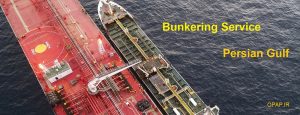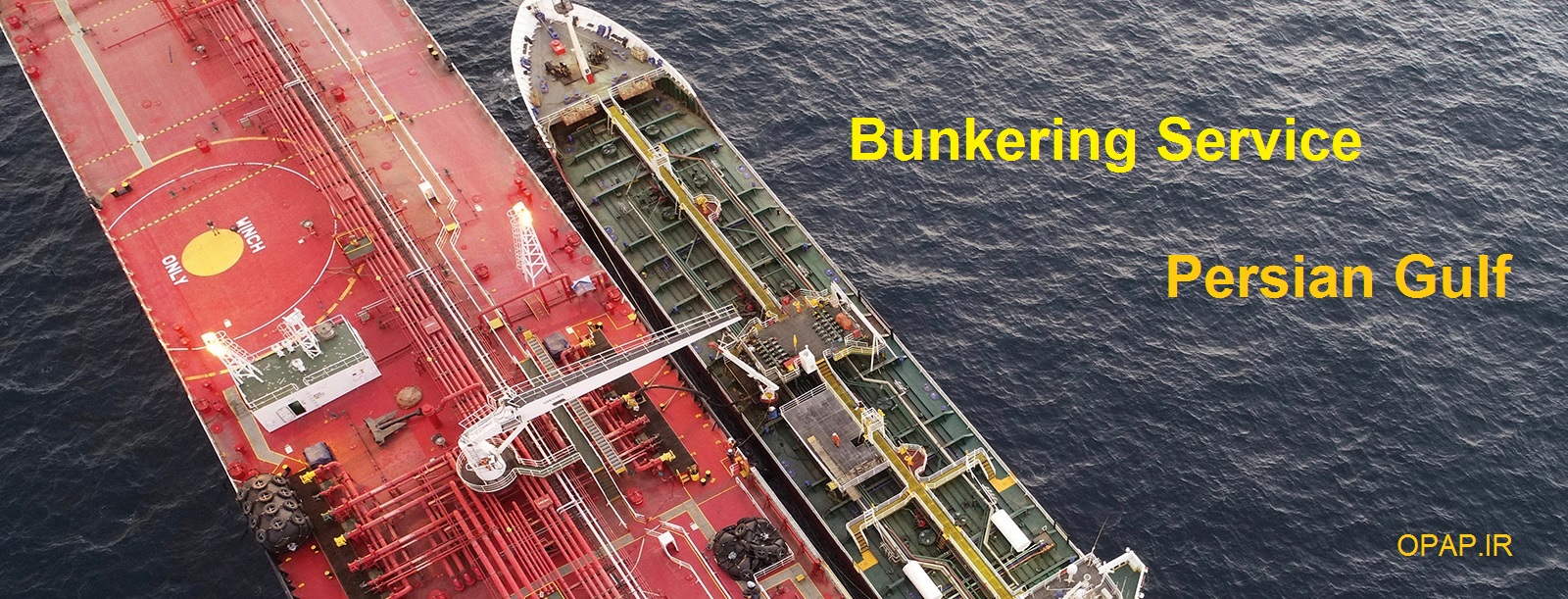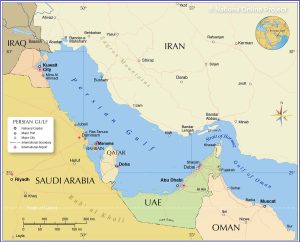Explore the evolving bunker fuel supply and regulations in the Persian Gulf. Learn how IMO rules, regional dynamics, and new technologies are shaping this vital maritime fuel hub.

Why Bunker Fuel Supply in the Persian Gulf Matters
The Persian Gulf—flanked by global oil giants like Saudi Arabia, the UAE, Iran, and Kuwait—is not just a geopolitical flashpoint. It’s also one of the most critical hubs for maritime refueling, commonly known as bunkering. Every day, thousands of vessels transit through this narrow but economically powerful waterway, relying on its ports for fuel. According to the International Maritime Organization (IMO), nearly 30% of global crude oil exports move through the Strait of Hormuz. Without efficient, safe, and compliant bunker fuel supply, this massive flow of trade would be at risk.
But bunkering in the Persian Gulf is not just about volume—it’s about responsibility. With the 2020 IMO sulfur cap, regional suppliers had to pivot rapidly to offer compliant fuels. From stricter fuel testing regimes to investments in very low sulfur fuel oil (VLSFO) and alternative bunkering technologies, this region is undergoing a significant transformation.
The Strategic Importance of the Persian Gulf Bunkering Market
The Persian Gulf serves as a maritime artery between Asia, Europe, and Africa. Ports like Fujairah (UAE), Jebel Ali (UAE), Dammam (Saudi Arabia), and Bandar Abbas (Iran) have become key nodes in the global bunker fuel supply chain. Fujairah, in particular, ranks among the top three global bunkering ports, trailing only behind Singapore and Rotterdam, according to Clarksons Research.
What sets this region apart?
-
Geographic Advantage: Close proximity to major oil fields.
-
Deep-Water Ports: Capable of serving Very Large Crude Carriers (VLCCs) and Ultra Large Container Ships (ULCS).
-
Storage Capacity: Fujairah alone has over 10 million cubic meters of oil storage capacity.
-
Strategic Resilience: Despite political tensions, bunkering services remain relatively uninterrupted—a testament to robust infrastructure and high regional stakes in global trade.
Developments in Bunker Fuel Types and Supply Chains
Transition to Low-Sulfur and Alternative Fuels
With the IMO 2020 mandate limiting sulfur content in marine fuels to 0.50% m/m (down from 3.50%), Persian Gulf suppliers had to adjust quickly. This sparked a major shift toward:
-
VLSFO (Very Low Sulfur Fuel Oil): Blended fuel that meets sulfur regulations.
-
MGO (Marine Gas Oil): More refined, cleaner-burning option.
-
HSFO + Scrubbers: Some vessels continue using high-sulfur fuel with exhaust gas cleaning systems (scrubbers).
According to DNV’s Maritime Forecast to 2050, by 2024, VLSFO usage in the Persian Gulf accounted for over 60% of all bunker deliveries in major ports.
Growing Interest in LNG and Methanol
Major bunkering hubs like Fujairah and Sohar (Oman) have started offering Liquefied Natural Gas (LNG) as a bunker fuel. In 2023, ADNOC L&S announced a joint feasibility study for LNG bunkering infrastructure in UAE ports.
Methanol is also being explored, with Maersk’s methanol-powered ships drawing attention to alternative green fuels. However, regional uptake remains slow due to infrastructure and regulatory hurdles.
Regulatory Frameworks Governing Bunker Operations
IMO Regulations and Global Maritime Law
IMO rules set the tone for bunker fuel supply worldwide. Key mandates include:
-
MARPOL Annex VI: Limits air pollutants from ships, including SOx, NOx, and particulate matter.
-
IMO 2020: Enforced a global 0.50% sulfur limit.
-
Energy Efficiency Existing Ship Index (EEXI) and Carbon Intensity Indicator (CII): Target GHG emissions starting from 2023.
All Persian Gulf ports serving international vessels must comply. Local authorities, such as the UAE Federal Transport Authority and Iran’s PMO (Ports and Maritime Organization), ensure enforcement.
National and Regional Enforcement Mechanisms
Each Gulf country enforces bunker compliance through its maritime authorities:
-
UAE: The Federal Maritime Authority and port operators at Fujairah conduct random fuel sampling and maintain certified supplier registries.
-
Saudi Arabia: The Saudi Ports Authority (MAWANI) coordinates with Aramco to regulate bunker activities at key ports.
-
Iran: Iran’s PMO ensures compliance at ports like Bandar Abbas despite ongoing sanctions-related complications.
-
Oman: Sohar Port follows guidelines issued by the Ministry of Energy and Minerals.
Environmental and Safety Challenges
Marine Pollution Risks
Despite best efforts, bunkering in the Persian Gulf is not without environmental risks. According to the Marine Pollution Bulletin, the Gulf is one of the most enclosed and vulnerable marine ecosystems globally. Fuel spills, whether accidental or operational, can have severe consequences.
The region has seen several minor bunker spills, including a 2022 incident off Ras Al Khaimah, which led to the suspension of a supplier’s license. This underscores the need for:
-
Proper training for bunker operators.
-
Real-time fuel quality monitoring.
-
Emergency spill response systems.
Air Emissions and Human Health
The IMO sulfur cap has improved air quality near coastal cities. A study published in Science of the Total Environment in 2023 found a 35% reduction in SO₂ levels near Fujairah Port compared to 2019 levels.
Bunker Pricing and Market Volatility
The Persian Gulf’s fuel pricing remains dynamic due to:
-
Global crude prices (often benchmarked by Brent or Dubai crude).
-
Refining capacity (especially in Saudi Arabia and UAE).
-
Geopolitical risks, including sanctions, conflict threats, and Houthi activity near the Strait of Hormuz.
In early 2024, average VLSFO prices in Fujairah hovered around $650/MT, with HSFO at about $470/MT—closely tied to global demand and refinery output, per S&P Global.
Case Study: Port of Fujairah – A Bunker Giant
Fujairah has grown from a small regional port into the third-largest bunkering hub globally. Key milestones include:
-
Early 2000s: Expansion of oil storage facilities.
-
2018: Implementation of IMO-compliant fuel supply chains.
-
2022–2024: Initiatives for LNG and biofuel bunkering.
Fujairah’s commitment to innovation and transparency (using digital bunkering platforms, real-time sampling, and satellite tracking via MarineTraffic) has made it a model for other Gulf ports.
Looking Ahead: The Future of Bunkering in the Persian Gulf
Green Bunkering Initiatives
Countries like the UAE and Oman are investing in:
-
Biofuels: Blended fuels from waste oils or algae.
-
Ammonia and Hydrogen: Still in pilot stages, but long-term potential is high.
-
Onshore Power Supply (OPS): Enabling ships to plug into the grid while docked, reducing idling emissions.
In collaboration with IMO’s GreenVoyage2050 project, several Gulf countries are exploring regulatory pathways and infrastructure for future-ready fuels.
Digitalization and Transparency
New technologies are transforming bunkering, including:
-
Blockchain for bunker delivery notes (BDNs).
-
Real-time emissions tracking via IoT sensors.
-
AI-driven logistics for fuel scheduling.
Companies like Wärtsilä and Inmarsat are leading some of these tech pilots in UAE ports.
Frequently Asked Questions (FAQ)
What is bunker fuel, and why is it important?
Bunker fuel is the fuel used to power ships. It’s critical for global trade and is supplied at specialized ports like those in the Persian Gulf.
What changed with IMO 2020 in the Persian Gulf?
The sulfur content in marine fuels had to drop to 0.50%, prompting suppliers in the Gulf to switch from high-sulfur to compliant low-sulfur fuels.
Is LNG bunkering available in the Persian Gulf?
Yes, particularly in the UAE and Oman. More ports are preparing infrastructure for LNG and other alternative fuels.
Are bunker fuel prices the same across Gulf ports?
No. Prices vary based on port infrastructure, supply chains, and geopolitical risks. Fujairah typically offers competitive rates.
How do Persian Gulf ports ensure bunker quality?
Ports like Fujairah use certified suppliers, fuel sampling, and random audits to ensure compliance with IMO standards.
What are the environmental risks of bunkering in the Persian Gulf?
Risks include oil spills, air pollution, and marine ecosystem damage—especially due to the Gulf’s semi-enclosed geography.
Is digital bunkering already in use?
Yes. Blockchain, digital sampling, and satellite monitoring are increasingly common, especially in the UAE.
Conclusion: Navigating a Complex but Vital Fuel Landscape
Bunker fuel supply in the Persian Gulf is more than a logistical necessity—it’s a linchpin in the engine of global commerce. As the region adapts to stricter environmental regulations, embraces digitalization, and gradually prepares for green fuels, it continues to hold a dominant position in maritime energy supply.
For maritime stakeholders—whether shipping companies, port authorities, or maritime students—understanding the evolution of bunkering in this region isn’t just beneficial. It’s essential for staying compliant, competitive, and climate-resilient.


